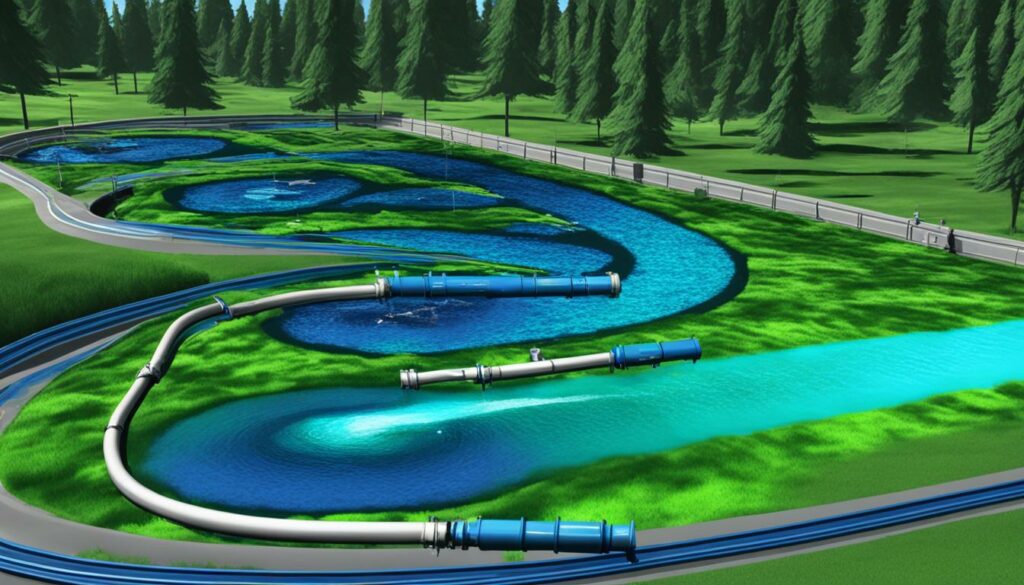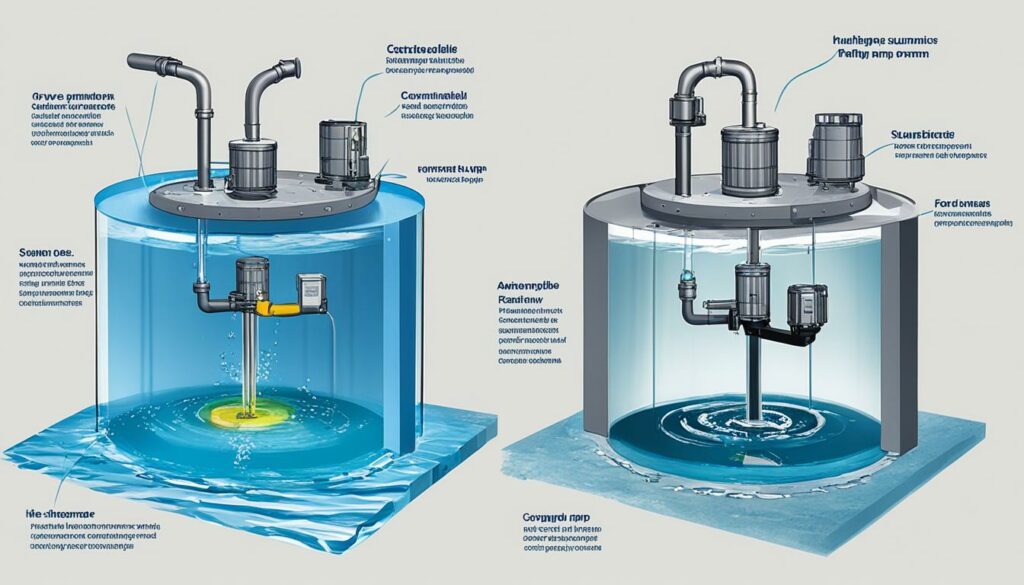
Selecting the appropriate stream pump systems is a fundamental step in effective stream management, whether you're focusing on garden streams, stream construction, or enhancing landscape streams. The right pump ensures optimal flow and maintains water levels in both natural and artificial water features. Understanding the types of pumps available and their specific purposes, such as irrigation or aesthetic enhancement, is essential for creating a sustainable and visually appealing environment. Efficiently designed stream pump systems can significantly contribute to the overall functionality and beauty of your outdoor space.
Understanding Pump Basics for Stream Management
Grasping the essentials of pump basics is crucial for efficient stream management. Awareness of various factors before making a pump decision significantly influences the effectiveness of your setup. Understanding the relationship between flow rate, head pressure, and other key specifications can lead to a more informed stream pump selection.
What You Need to Know Before Choosing a Pump
Before embarking on a pump purchase, consider the following essential elements:
- Total head: This represents the vertical distance the pump must lift water, affecting overall pump performance.
- Desired flow rate: The volume of water you aim to pump in a specific timeframe plays a significant role in selecting the right pump.
- Suction lift: This measures the vertical distance from the water surface to the pump, influencing pump efficiency.
- Fluid characteristics: Take into account factors like temperature, salinity, and debris, which are particularly relevant in aquaculture settings.
Importance of Flow Rate and Head Pressure
Flow rate and head pressure are interrelated; as one increases, the other tends to rise as well. When flow demand spikes, head pressure increases, significantly impacting pump performance and efficiency. Understanding this relationship assists in making more accurate stream pump selection decisions, ensuring that the pump meets your fluid movement needs under various conditions.

Different Types of Pump Systems
When it comes to managing water flow for streams, understanding the various pump systems available is crucial. The right choice can greatly influence efficiency, performance, and overall results. Two main types of pumps will be focused on—submersible pumps and surface pumps. Additionally, a comparison between centrifugal pumps and propeller pumps will provide further clarity for specific applications.
Submersible Pumps
Submersible pumps are designed to operate while submerged in water. These pumps excel in deep installations where the source of water is far below the ground level. By utilizing a sealed motor, submersible pumps can efficiently move water from deep depths to the surface. This feature makes them ideal for applications requiring the lifting of large volumes of water, such as dewatering or sewage management.
Surface Pumps
Surface pumps, unlike submersible pumps, are positioned above the water source. They draw water from shallow sources, making them suitable for tasks such as irrigation and basic water supply for outdoor fountains. One significant advantage of surface pumps is their easier accessibility for maintenance and repairs, which can lead to lower long-term operational costs.
Choosing Between Centrifugal and Propeller Pumps
Deciding between centrifugal pumps and propeller pumps largely depends on the specific requirements of your project. Centrifugal pumps are known for generating high pressure and are efficient for transporting water over long distances. They perform effectively in situations where a consistent water flow at elevated pressure levels is needed. In contrast, propeller pumps provide high volume flow rates and are more suited for lower head applications, often making them the preferred choice in agricultural settings.

Key Factors in Selecting Stream Pump Systems
Selecting the right stream pump system involves understanding crucial factors that impact performance. Among these, determining total head and suction lift plays a vital role. Additionally, assessing fluid characteristics helps ensure optimal efficiency and longevity in pump operation.
Determining Total Head and Suction Lift
Total head is essential in stream pump selection, encompassing the vertical lift and any pressure losses from friction along the pipes. Knowing this allows for accurate sizing and ensures the pump meets system demands. The suction lift must align with the manufacturer's specifications to avoid performance issues such as cavitation. Experts recommend checking these specifications consistently for effective operation.
Assessing Fluid Characteristics
Understanding fluid characteristics is critical when selecting a pump. Factors such as temperature, corrosiveness, and debris content significantly influence the decision-making process. For instance, pumping saline water may require materials resistant to corrosion. Evaluating these aspects ensures selecting a pump system that can withstand specific conditions while maintaining functionality over time.
Calculating Flow Rate for Effective Pumping
Understanding flow rate calculations is vital for ensuring effective pumping in stream systems. Accurate measuring flow rate can enhance system performance and prolong equipment lifespan. Numerous techniques exist for evaluating flow rate, each varying in complexity and precision. Generally, flow rate is determined by assessing the volume of water displaced over a specific duration, commonly noted in GPH (gallons per hour) or L/min (liters per minute).
How to Measure Flow Rate for Stream Applications
Measuring flow rate for stream applications involves several methods. The most straightforward approach is the bucket method, where water is collected in a container for a timed interval. Here's a quick guide:
- Position a bucket in the flow.
- Time how long it takes to fill the bucket.
- Calculate the flow rate using the formula: Flow Rate = (Bucket Volume / Time).
This method proves effective for estimating flow rates in smaller streams and can be adjusted depending on current conditions.
Calculating Required Flow for Water Features
Water feature requirements differ significantly based on the planned design and desired aesthetics. When consulting flow rate calculations for installations like fountains or waterfalls, several factors come into play:
- Width of the feature.
- Height and desired visual impact of water movement.
- Total head, which is the distance water must travel from the source.
A common rule of thumb suggests that waterfalls require 100 to 150 GPH for every inch of width. Proper understanding of these guidelines leads to successful outcomes in both functionality and appearance.
Common Applications for Stream Pump Systems
Stream pump systems are essential for various applications, particularly in enhancing the functionality and aesthetic appeal of outdoor spaces. One of the most popular uses is in garden streams, where garden stream pumps play a critical role in ensuring proper water circulation and filtration. Selecting an appropriate pump based on the desired flow rate and height of the water feature is vital for achieving the intended design and maintaining the health of aquatic plants and wildlife.
Pumping Water for Garden Streams
When implementing garden streams, the choice of pump can significantly impact the overall appearance and functionality. A well-chosen pump not only helps to create a beautiful landscape but also ensures that water remains clear and healthy for any fish or plants involved. By considering factors such as flow rate and head pressure, you can effectively enhance your garden's visual charm while promoting a sustainable ecosystem.
Utilization in Aquaculture and Irrigation
Aquaculture applications demand precise and reliable pump systems to maintain optimal water quality and temperature. These systems are frequently employed in fish farming and other aquatic projects, where the water's health is crucial for the livelihood of aquatic species. Similarly, in irrigation systems, consistent and reliable flow rates from pump systems are imperative for optimizing water usage and ensuring crops receive sufficient hydration. By effectively using stream pump systems in these areas, both aesthetic and functional requirements are met, benefiting agricultural productivity and aquatic environments alike.








